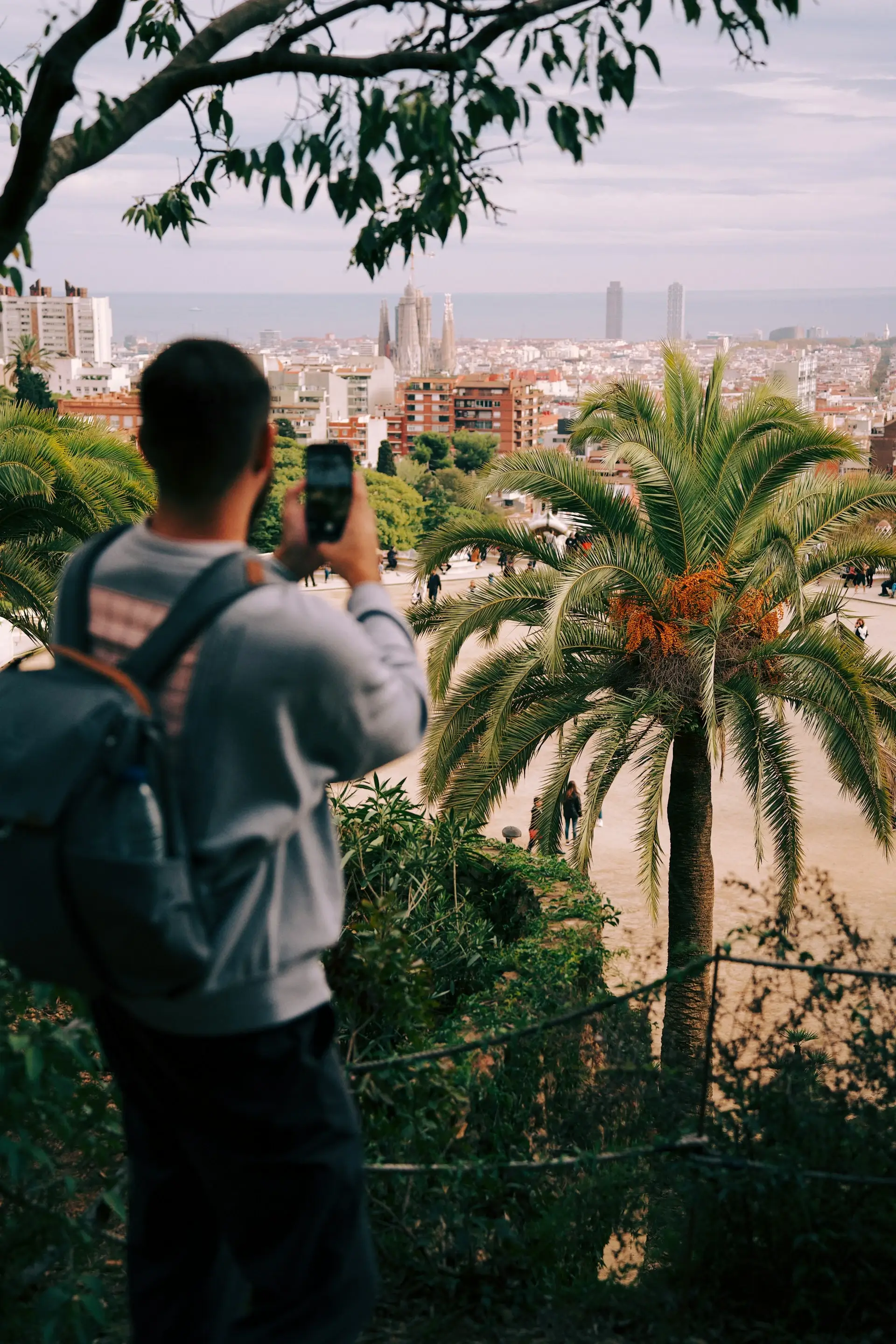
Is It Good to Visit Barcelona in January? Weather, Events & Tips
Considering a trip to Barcelona in January? Discover weather insights, local events, and essential tips to make the most of your visit. Read more!
Discover charming villages in the Barcelona countryside, perfect for digital nomads looking for a peaceful getaway. Culture, food, and views. Read more!
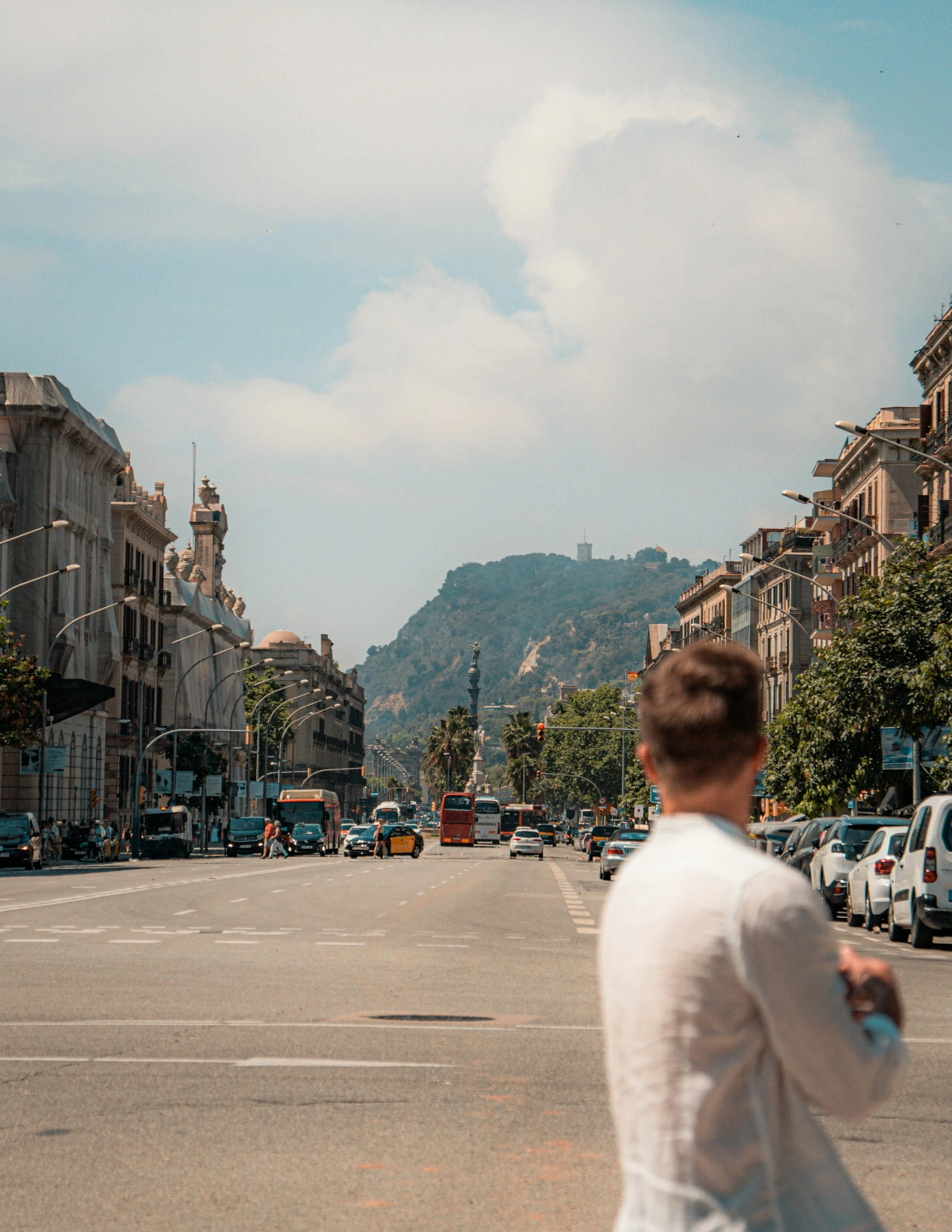
Been to the beach, walked Las Ramblas, elbowed your way through the tourist attractions? Time to breathe.
The Barcelona countryside is your quiet escape. It has stone houses, rolling hills, and the kind of silence you didn’t know you missed. Just an hour or two out, and suddenly you’re in a charming village with cobbled streets, local wine, and zero stress.
Whether it’s a slow lunch in the Catalan countryside or a seaside hike near Tossa de Mar, these day trips aren’t just easy—they’re necessary.
Trade your hotel lobby for a family-run inn in one of those beautiful medieval towns that still nap after lunch. You don’t need a full plan. Just get on a train and pick a direction that smells like pine trees and grilled calçots.
If you're tired of crowds, craving space, or just want a weekend where your phone stays in your pocket, this is your sign. Imagine gold light on old stone, cava sipped under fig trees and narrow streets that lead to nowhere in particular. Here's where to go when the city of Barcelona starts to feel a little too much like… a city.
You can’t drive there. That’s your first clue it’s special.
Hop on the rack railway from Ribes de Freser and wind your way up into the mountains. No traffic, no horns, just pine trees and peaks that feel like they’re watching over you.
Núria isn’t flashy. It’s quiet trails, grazing horses, lakeside naps. Come here to hike, snowshoe, or do absolutely nothing in the fresh air. Ideal for slowing down without feeling like you’ve stopped.
Local tip: pack snacks—food up there is fine, not famous. But the scenery? That’s Michelin-star level.
Stay: Hotel Vall de Núria (starts around €100/night). It’s cozy, basic, and has killer views from the window.
A UNESCO World Heritage Site that somehow still feels like a secret. Just an hour from Barcelona, Montseny is all leafy trails, tiny hamlets, and houses that smell like wood smoke.
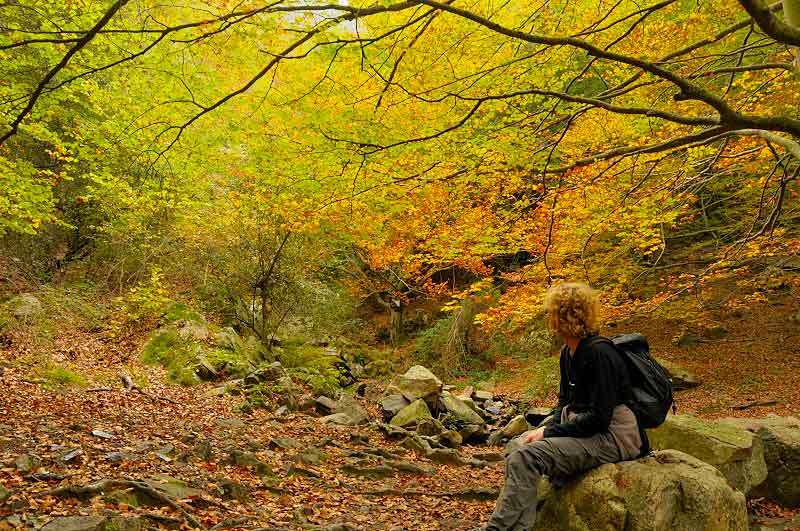
This isn’t a place to rush. It’s where you rent a carved stone house with a fireplace, buy cheese from someone’s grandmother, and finally finish that book. Or that idea. Montseny makes room for both.
Stroll through narrow streets in villages like Viladrau or El Brull. Eat chestnut stew if it’s autumn, or have a long lazy lunch at Can Cuch with a view of the valley.
Stay: Casa Rural Can Vila (~€120), where the WiFi’s surprisingly strong for somewhere that looks straight out of a storybook.
Ah, Penedès. If you like wine, welcome. This is the land of cava—bubbly that’s born here and (let’s be honest) tastes better here.

Visit famous vineyards like Codorníu or go the indie route with smaller, family-run spots in Sant Sadurní. Take a guided tour, taste too many glasses, and don’t drive after.
This region is more than wine though. There’s the Natural Park of Foix for walks, quiet towns like Castellet, and inland villages where the Catalan language sings through the markets.
Add a day at the coast—beautiful beaches like Vilanova are just a short drive away. Yes, you can have both wine and waves.
Stay: Hotel Mastinell (around €150), shaped like a string of cava bottles, because why not?
We love Tossa de Mar, but if you want the real gold of the Costa Brava, head inland. Less crowd, more charm.
Peratallada is like walking through a movie set—stone arches, ivy-covered walls, and candlelit dinners on cobbled streets. No cars in the old town, just peace and the sound of forks on plates.

Begur has a hilltop castle, sea views, and enough excellent restaurants to make choosing hard. Start with dinner at Toc al Mar down on the cove—it’s fresh, salty, unforgettable.
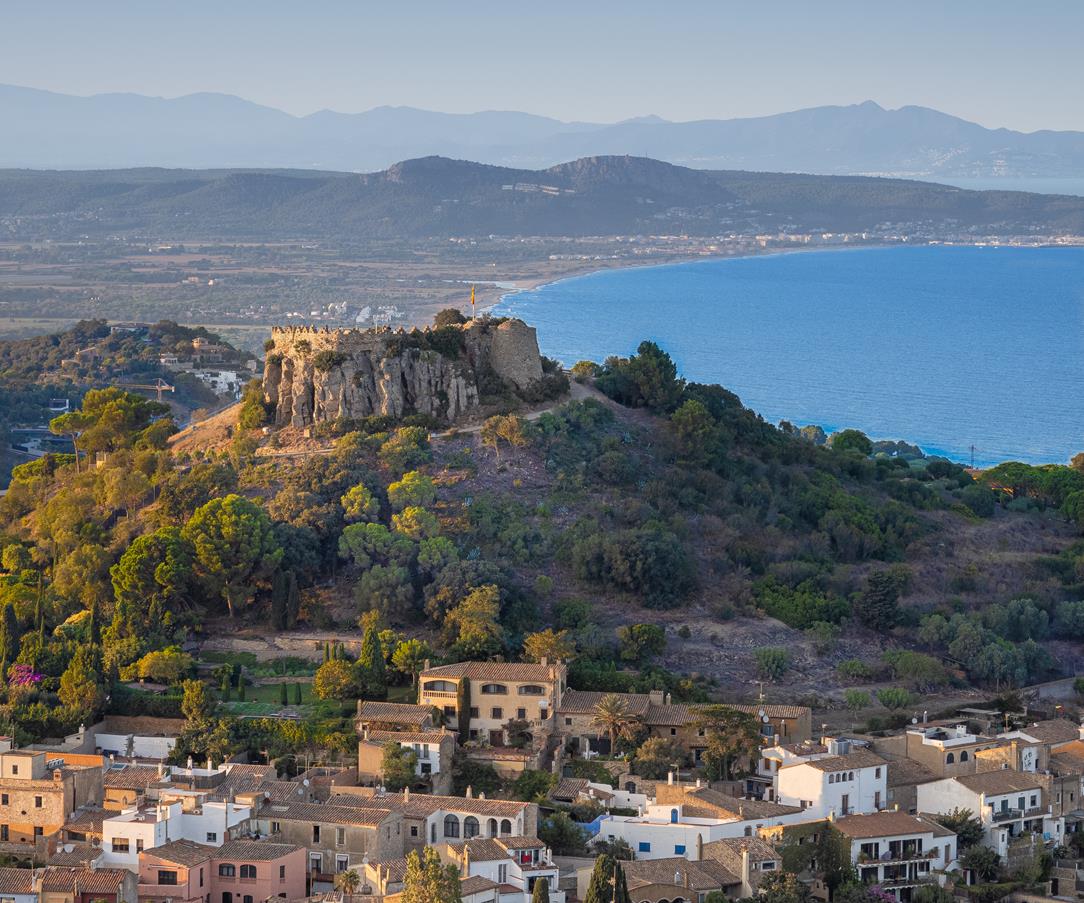
Calella de Palafrugell mixes fishing village calm with a postcard-perfect seafront promenade. Think early swims, coffee with a view, and sun-warmed rocks instead of sun loungers.

Stay: Aiguaclara Hotel in Begur (~€110), run by a couple who’ll probably remember your name by the next morning. Or go rustic chic with a farm stay near Peratallada.
Want to feel like you’re in medieval times—but with WiFi and room service? Go to Cardona.
Its Parador is an actual castle, perched high above the town with views that stretch for miles. Walk the ramparts, tour the ancient salt mines (yes, salt), and explore a city center filled with Gothic nooks and storytelling stones.
It's less touristy, more atmospheric. The kind of place where you can hear your footsteps echo.
Stay: Parador de Cardona (~€130). Every room has stone walls, high ceilings, and the kind of beds that make you sleep like royalty.
In the Catalan countryside, you don’t need much. A pair of walking shoes. A taste for slow mornings. And maybe a friend to say “wow” with. Whether you're chasing beautiful beaches, discovering hidden villages, or sipping wine in a vineyard, the best thing you’ll find is the space to feel like yourself again.
And if you end up extending that day trip to a full-blown weekend—don’t say we didn’t warn you.
Out here, plans move slower—and that’s exactly the point. This region doesn’t shout for attention. It invites you in, gently, with a glass of wine, a view of the mountains, and a nudge to put your phone down. Whether you're in it for the hikes or the ham, here’s how to spend your time beyond the city.
Vall de Lord is a perfect spot for hikers. Just north of Solsona, you’ll find walking trails that zigzag through forested hills and around Sant Llorenç de Morunys, a tiny medieval village tucked between peaks.

La Garrotxa Volcanic Zone (natural park) is pure magic. Crater trails, lava fields, and thick oak forests make it one of the greenest places in Spain. The Fageda d’en Jordà beech forest is the star—especially if you visit in autumn, when it looks like something out of a dream.

Want sea air with your cardio? Try the cobblestone streets of Tossa de Mar’s old town and walk up to the lighthouse. It’s not long, but those breathtaking views of the clear water coastline are worth every step.
Local tip: bring trail runners and your appetite—most routes lead to food.
This isn’t the place for chain restaurants. Here, it’s all about eating with the seasons and the neighbors. Try La Calèndula in Regencós, where the chef literally picks your herbs from her garden. Or El Celler de Can Roca in Girona if you're splurging—it’s ranked one of the best in the world.
Head to Empordà for local wine. Visitors can take a guided tour through vineyards located in the south of the region and sip in the sun. Most tastings are €10–€20 and include generous pours, local olive oil, and cheese.

For something simpler? Just visit a medieval village like Monells and grab a €12 menú del día. You’ll eat like a king, without the tourist markup.
There’s no better way to discover a place than through its market.
Olot (Monday and Saturday mornings): seasonal produce, local honey, and sharp Catalan cheese. Get there early—locals shop with purpose.
Palafrugell (Sundays): a mix of farmers, flowers, and vintage finds. Great for wandering and people-watching.
Vic (Tuesdays and Saturdays): one of the oldest in Catalunya, set in a square lined with porticoes. This is your best bet for cured meats, ceramics, and conversations with chatty Spanish grandmas.
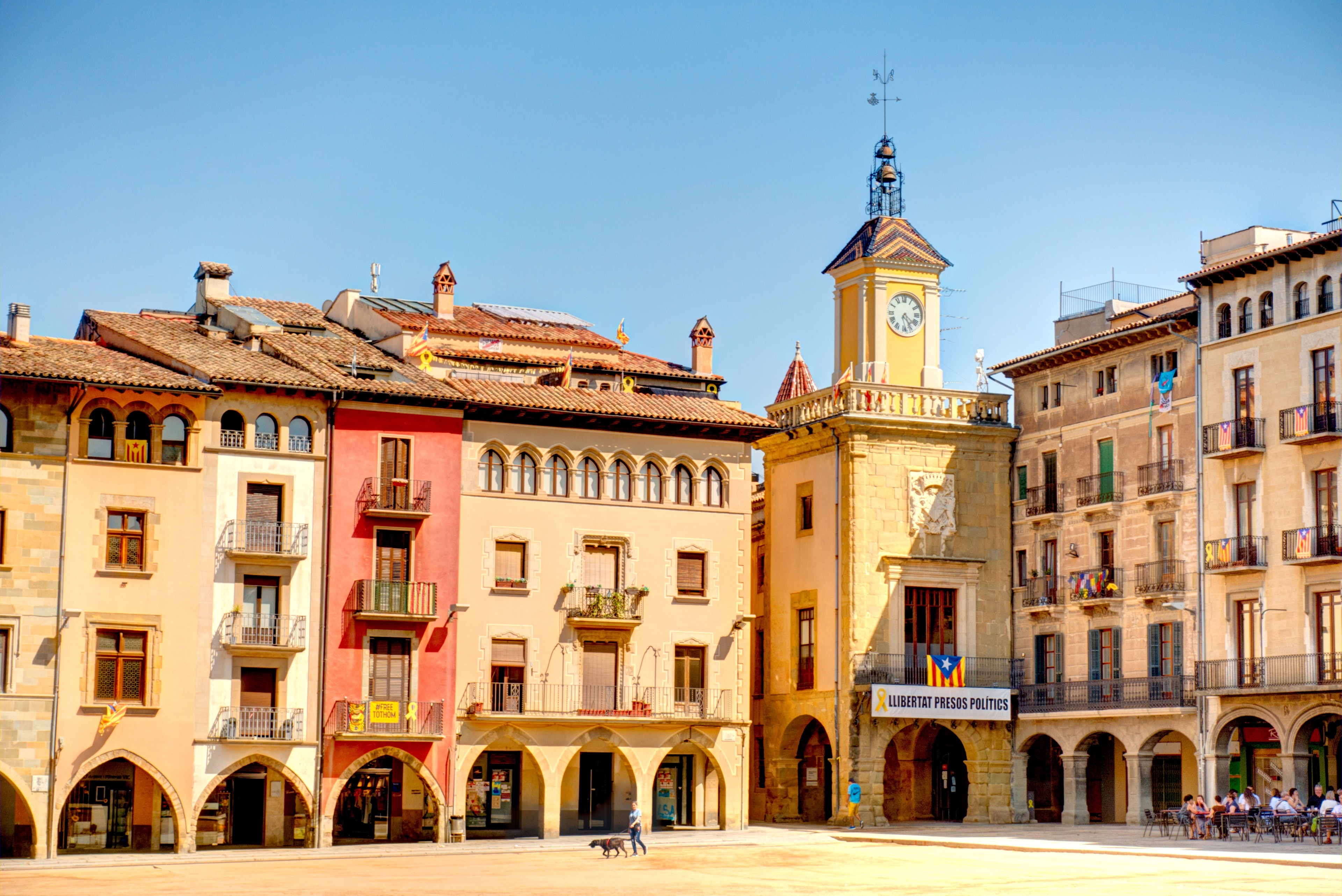
Pro tip: Markets are peak day trip energy. Go early, grab a bite, and be back in Barcelona by sunset.
The mountains here hide more than trails. History’s tucked into every stone wall.
Besalú is the real-life postcard. Explore the medieval village with Romanesque churches, cobblestone streets, and the kind of old-world vibe that makes you whisper.

Castell de Montsoriu, located in the natural park of Montseny, is one of the most impressive Gothic castles in Spain. Book a tour and climb to the top—it’s 632m high, and the breathtaking views sweep from the sea to the Pyrenees.
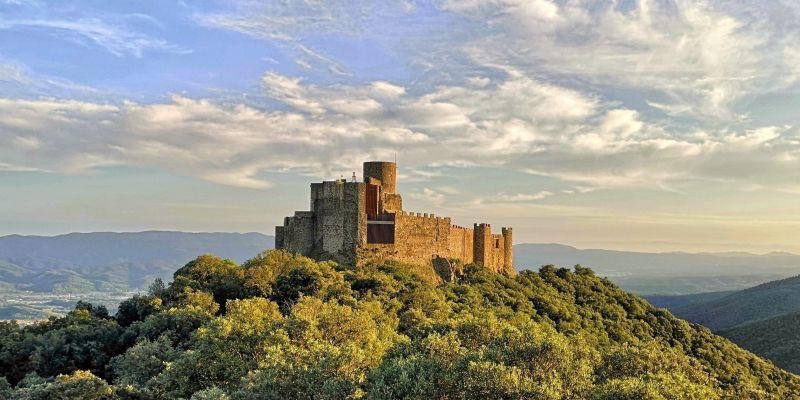
Sant Pere de Rodes near El Port de la Selva looks like it was carved out of a mountaintop. The former Benedictine monastery is stunning, especially at sunset. A quick visit you will always remember.

The countryside in Barcelona isn’t trying to be anything—it just is. Authentic, slow, full of quiet surprises. So take your time. Follow the olive trees. Chase the scent of woodsmoke. That’s where the good stuff hides.
The countryside in Barcelona knows how to host. Whether you're escaping the city center for a couple of nights or planning to set up a mini life somewhere with fewer horns and more olive trees, there’s an excellent range of options. And yes, many of them come with that unbeatable mix of Mediterranean light and local charm.
These are your go-tos when you just need a change of scene. Quiet, scenic, and full of charm—perfect for couples, families, or that small village friend group that finally found a weekend that works.
Rural Masias: Think farmhouses turned cozy guest stays. Great for groups. Check out Mas el Mir in Ripollès or Mas Ferran near Banyoles. Prices hover around €40–€60 per person, per night.

El Molí de Siurana (near Figueres): A boutique B&B surrounded by olive trees and silence. Breakfast is local, the air smells like rosemary, and hammocks swing under the shade. From €110/night.
Can Bonastre Wine Resort (in the Penedès): Sleep in a vineyard. Drink cava from the source. Stare at Montserrat from the infinity pool. It’s low-key luxury that hits the right notes. Rates from €200/night.
Calella de Palafrugell: If your perfect place involves whitewashed walls, costa brava sunsets, and walking barefoot to a cove, you’re home. Look for small beachfront hotels like Hotel Sant Roc or casual short term rentals just up the hill.
Maybe it’s a work break. Maybe it’s still work, just without Slack dings echoing off your kitchen tiles. These are the spots to really explore life outside the city—without sacrificing your standards (or your desk setup).
La Garrotxa: Volcanic soil, crisp air, and WiFi strong enough to run meetings from a terrace. Visitors love the slow pace and hiking access. Great for a 2–4 week base. Find houses around Olot or Santa Pau with dedicated workspaces from €800–€1200/month.
Penedès: If your soul needs wine and your brain needs peace, this is a solid balance. Quiet places like Sant Martí Sarroca or Torrelles de Foix offer rental houses with excellent daylight, countryside views, and weekly markets a stroll away. Expect €900–€1300/month depending on season and extras.
Santa Coloma de Cervelló: Closer to Barcelona, but with a village feel. It’s also home to the famous Colònia Güell, where Gaudí left a stunning crypt. Commute into the city center if you must, but trust us—once you're here, you won’t want to.
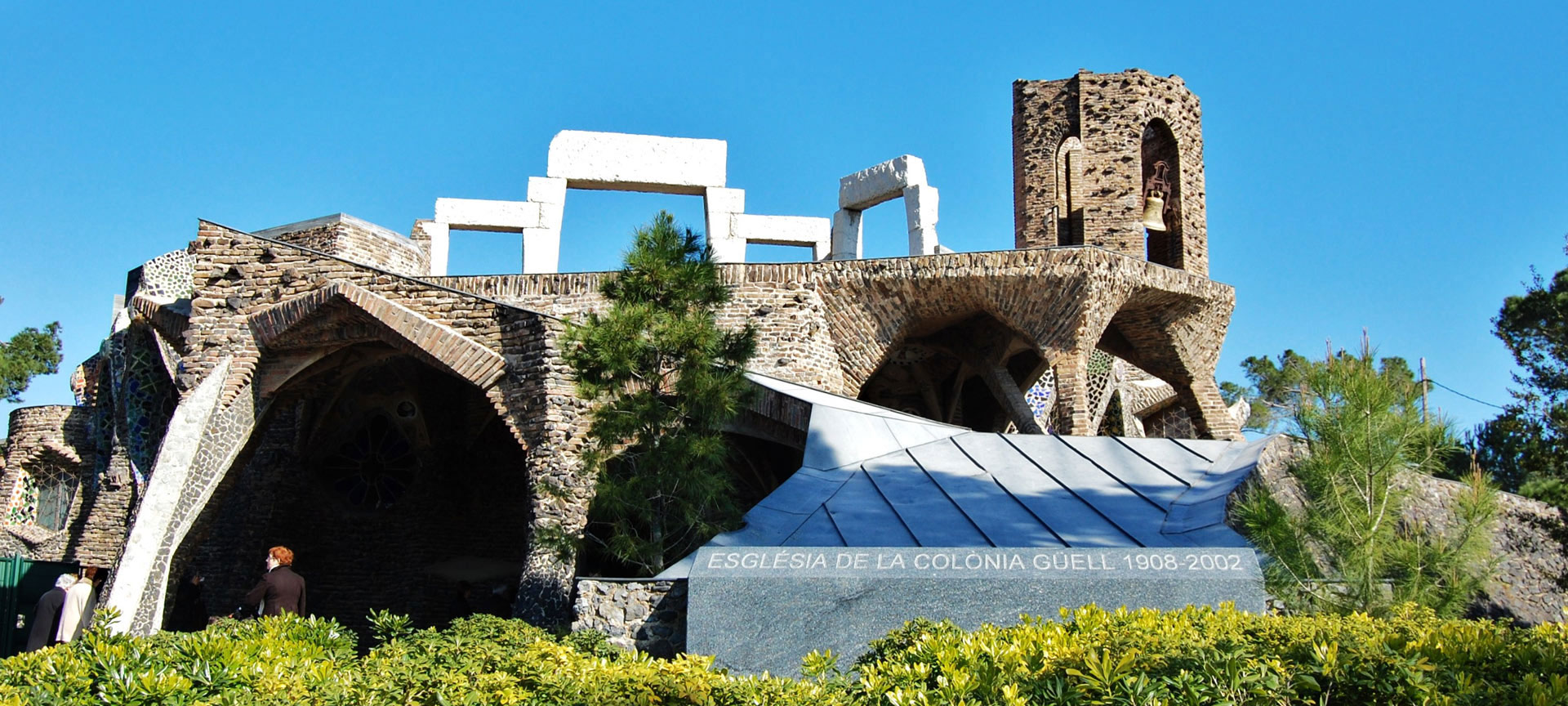
Sant Llorenç del Munt i l'Obac Natural Park: Remote, green, and full of magic-hour light. Great for nature-lovers who also want to trail run before calls. There are short term rentals scattered across the hillsides—go for something with a big table, good coffee gear, and a mountain view.
Remote Work Tip: Not all homes are ready for the remote life. Don’t gamble your deadlines—use RentRemote to short term rentals with workstations in Barcelona (think ergonomic chairs, wide screens, and real desks, not “kitchen counters with a view”). Because even the best trip gets better when your space works for you.

According to Spain’s tourism board, rural tourism saw a 26% increase last year among travelers from across Europe. More people are choosing calm over chaos—and staying longer in places where the pace matches the mood.
Whether you're staying for two nights or two months, these places aren’t just where you sleep. They’re where you slow down, look around, and realize—this might just be the perfect place to be.
Staying in countryside might feel like luxury, but it doesn’t have to price like it. Whether you’re here for a quick visit or a full recharge, the essentials are refreshingly affordable compared to Barcelona or other European hotspots.
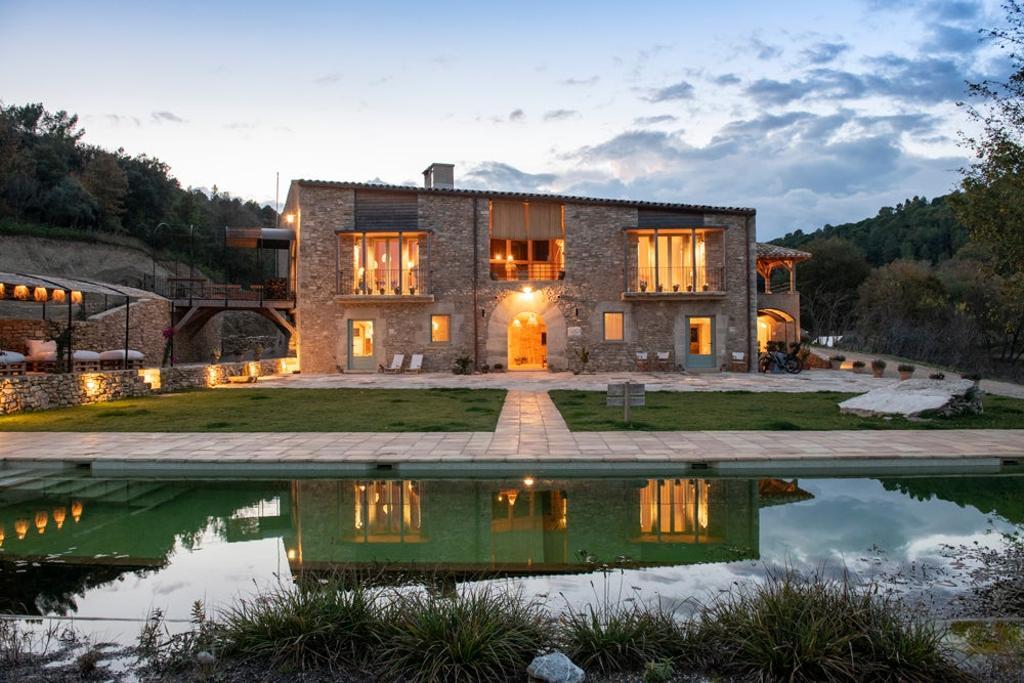
Rural guesthouses or tiny village B&Bs: from €60–€90/night.
Boutique stays in places like Tossa de Mar or the inland Costa Brava: €100–€150/night.
Long-term rentals in Garrotxa or Penedès with workstation setup: from €500/week.
Pro tip: Off-season (Nov–Mar) rates drop by 15–25% in most countryside areas.
Regional trains (e.g. Barcelona to Tossa de Mar): €7–€15 one way.
Car rentals (perfect for tiny villages and coast hopping): €35–€60/day.
Most spots are located within 1.5–2 hours from the capital by car or train.
Menú del día (3 courses + wine): ~€12 in local spots like Can Dolç (Begur) or Hostal La Fosca (Palamós).
Groceries are 10–20% cheaper than central Barcelona.
Local markets in mediterranean villages are packed with fresh produce for under €20 a week.
Spain consistently ranks in the top 5 most affordable destinations in Europe for long-term travelers—without skimping on quality of life.
Bottom line? You don’t need big-city money to enjoy costa brava views, slow lunches in a old village, or mountain air so clean it feels made up.
You don’t need wheels to discover the best of the Barcelona surroundings. In fact, over 85% of weekend visitors to rural areas around Barcelona rely on public transport or shared cars. Turns out, you can go far without going full road trip. Most spots are trainable, bus-ready, or just one rideshare away. Save your energy for the hikes, beach strolls, and long lunches.
Sitges: A quick 40-minute ride from Barcelona, this coastal gem blends history, cliffs, and golden Mediterranean light. Perfect for a beachy day or overnight stay.
Vic: A cultural stop with a rich heritage and a killer food market. Reachable in 75 minutes by Renfe.
Cardedeu & Sant Sadurní d’Anoia: For cava tours and slow strolls, both under an hour away by commuter train.
Moventis and Sagales buses cover smaller towns and beach areas along the Mediterranean. Tickets average €5–€10, and routes are frequent on weekends.
Heading to Santa María de Palautordera for Montseny trails? Buses run daily, and views start before you even arrive.
For more remote masias or hidden valleys, rent a car. Expect €35–€60/day, with hybrid or electric options widely available.
Pro tip: Apps like Rome2Rio or Moovit are great to map your trip in real-time—especially when juggling train-bus combos.
Short answer: yes. But you’ve got to be picky. Rural charm is great, but not when your Zoom call freezes right before you close the deal.
La Cafetera (Vic): Great coffee, better WiFi. Locals love it for quiet mornings and surprisingly good playlists.
Casa Moner (Girona): Yes, it’s a bakery—but upstairs is laptop heaven. Grab a croissant and plug in.
These spots are perfect for a few hours of focused work between your visit to a village or a wander through middle ages architecture. Just avoid peak lunch hours unless you like background noise.
Coworking Girona: Reliable WiFi, comfy chairs, and a community of freelancers who’ll probably share their lunch spot tips.
Espai Born (Figueres): Creative vibe, friendly staff, and surprisingly stylish for a town best known for a museum with the same name as Dalí.
Let’s be honest: for longer stays, cafés won’t cut it. 68% of remote workers say a bad work setup has negatively impacted their productivity while traveling. So don’t risk it: you need ergonomic chairs, a real desk, and lighting that doesn’t make you look like a vampire on video.
Discover the smarter way to work outside the city. With RentRemote you get ready-to-work rentals that don’t confuse a dining table with a workstation.
A village with charming streets. A trail that starts at your doorstep. A long lunch you didn’t rush through. The countryside of Barcelona isn’t just a break from the city—it’s a reset button with better views.
Here, work feels lighter, mornings are slower, and every visit ends with a quiet promise to come back.
Ready to unplug the noise and replug your focus? We'll help you find your next base.
Some of the top countryside escapes near Barcelona include the vineyards of Penedès, the historic town of Vic, the forested trails of Montseny, and the iconic peaks of Montserrat. If you're willing to go a bit farther, Girona and the villages along the Costa Brava (like Palafrugell) blend Mediterranean charm with laid-back rural life.
Yes—especially if you choose wisely. Towns like Vic and Girona offer solid infrastructure, local coworking spots, and café culture with reliable Wi-Fi. For quieter areas like Montseny or Penedès, it’s best to book accommodations with dedicated workspaces and verified internet speeds.
You can easily reach Vic, Girona, Penedès, or Montserrat by train or bus from Barcelona. However, for deeper exploration of Costa Brava’s smaller towns or Montseny’s natural park, having a car gives you more flexibility to follow scenic routes and discover local gems off the main trail.
Generally, yes. You’ll find high-quality rural stays starting from €60–€90 per night, especially outside peak summer months. Meals are more affordable too—expect a hearty local lunch menu for €12–€15, compared to higher city prices. Bonus: most countryside spots come with views, silence, and space to focus—no extra charge.
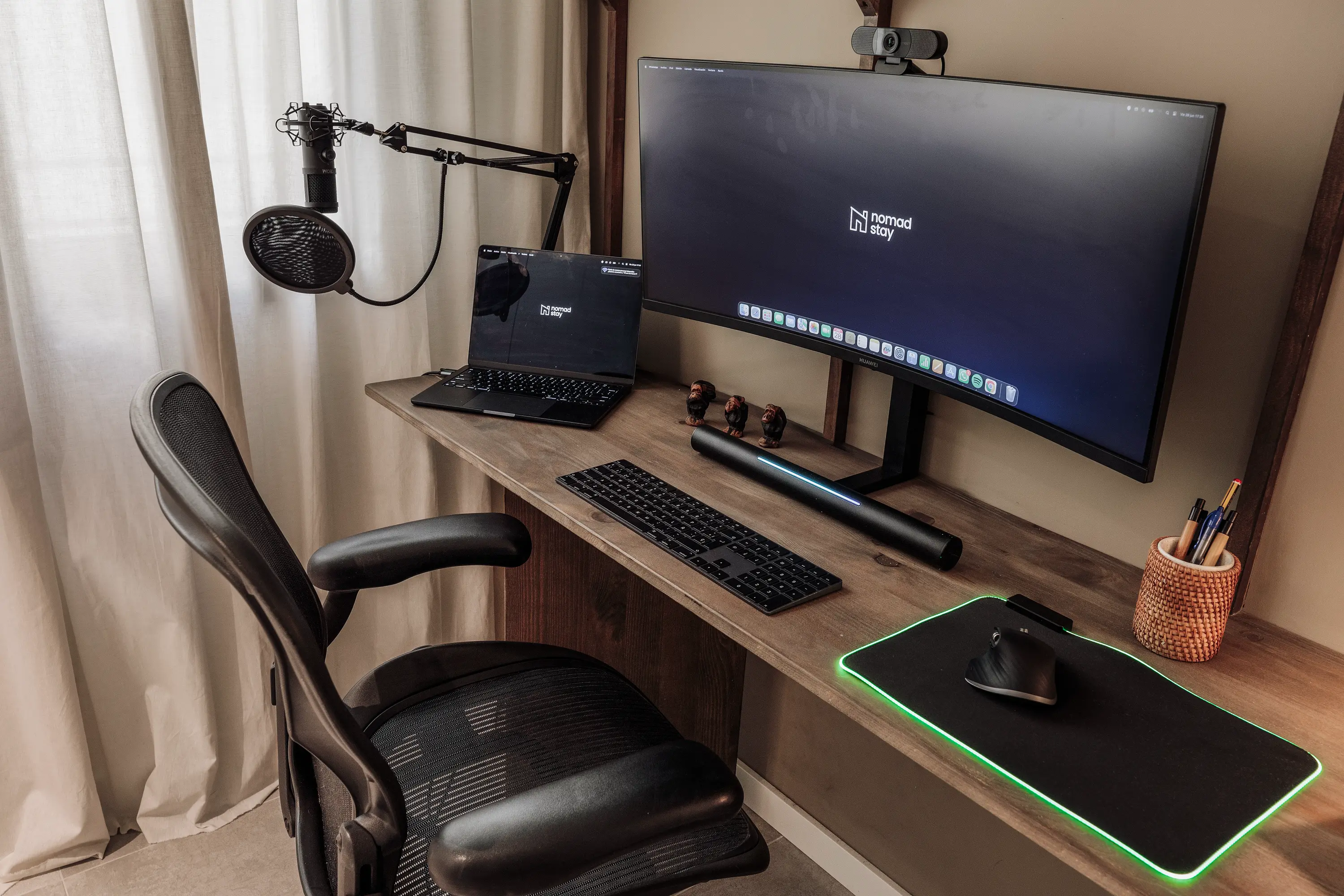
, barcelona

, barcelona

, barcelona

Considering a trip to Barcelona in January? Discover weather insights, local events, and essential tips to make the most of your visit. Read more!
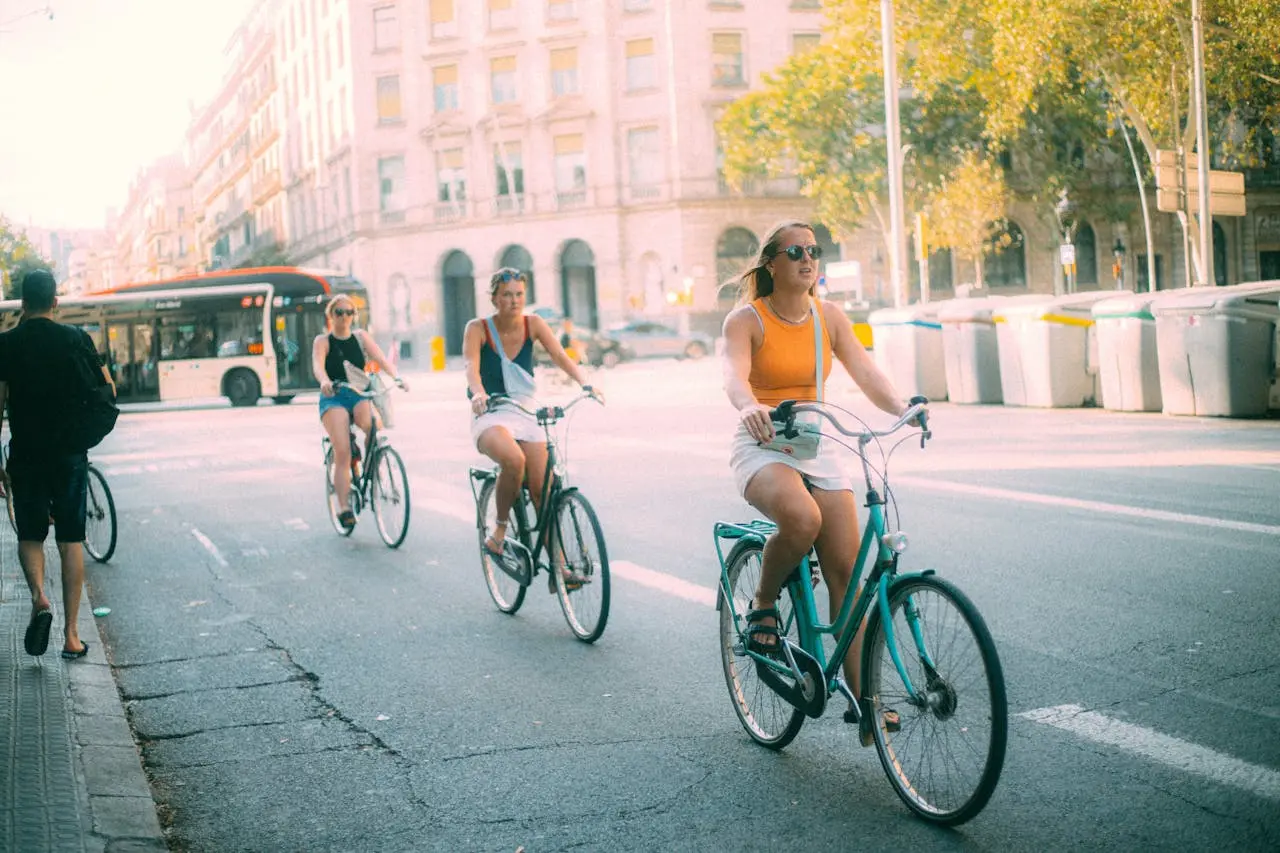
There's a perfect time and there's a horrible time to visit Barcelona. Learn how to avoid tourists, crowds and the heat waves. Read more!
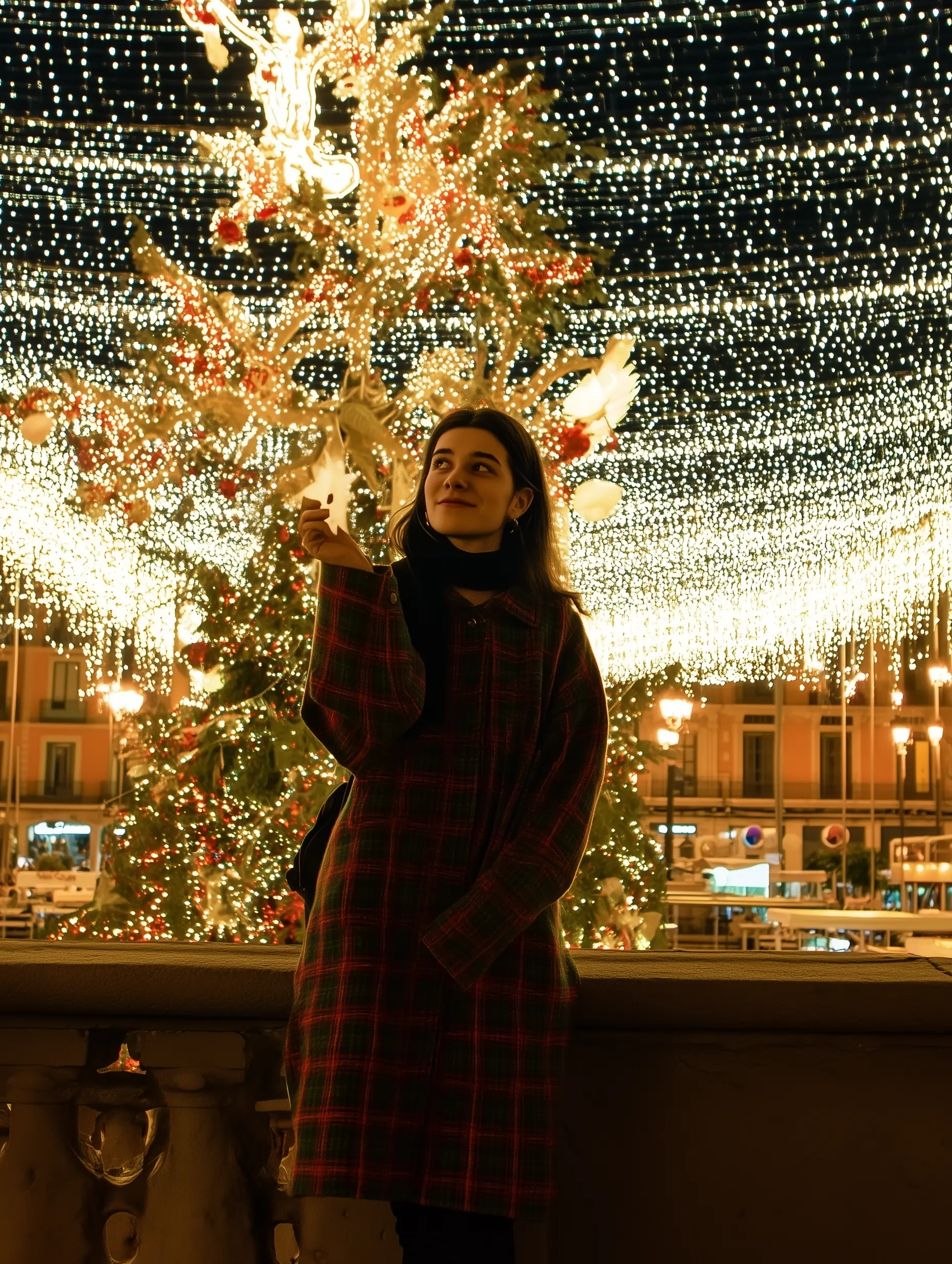
Discover the festive charm of Barcelona in December with our guide to seasonal activities, markets, and celebrations. Read on for your holiday adventure!